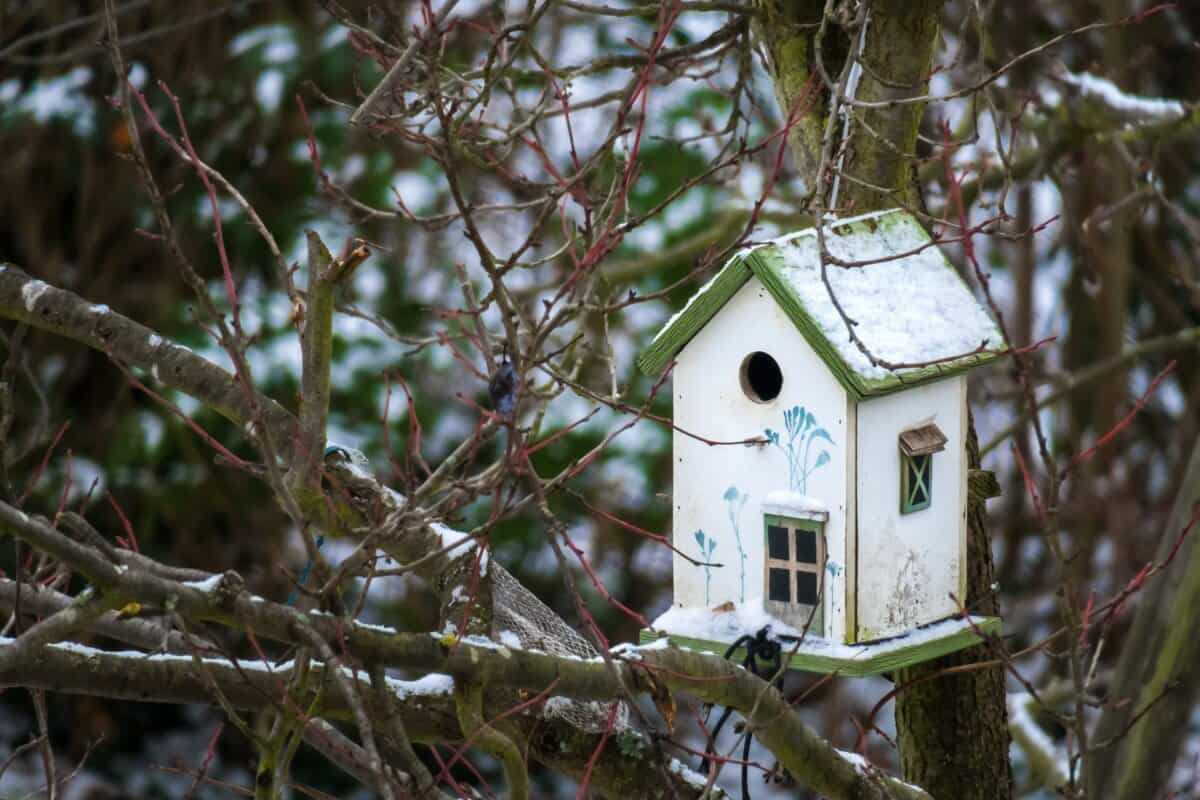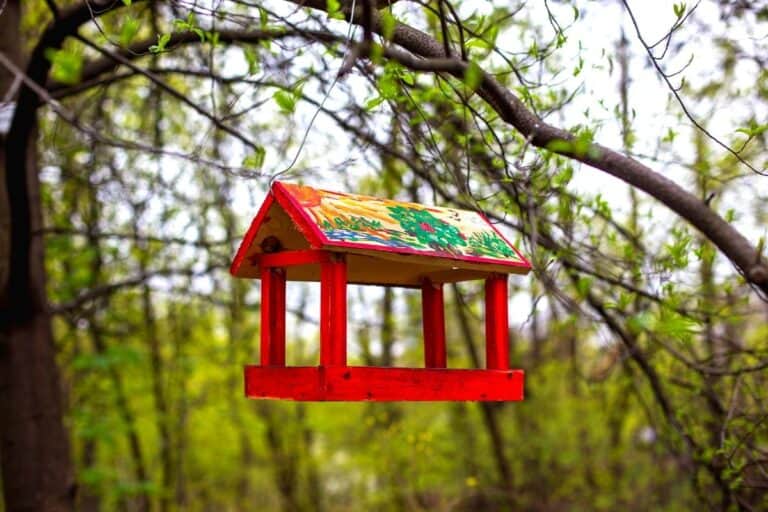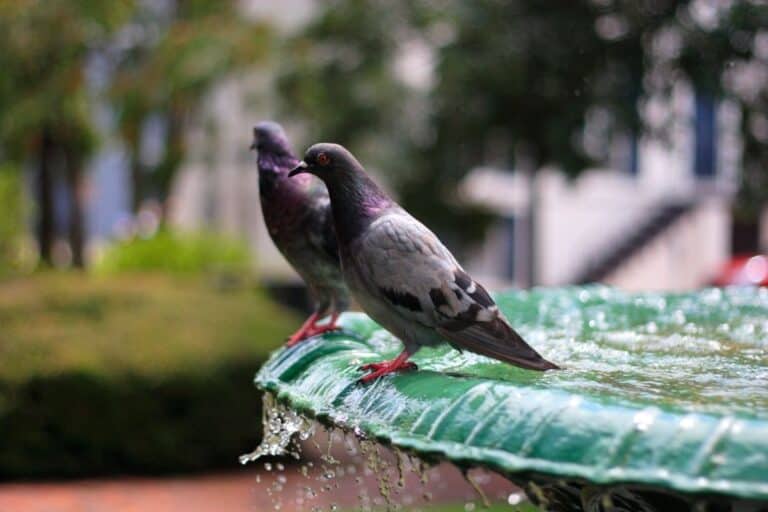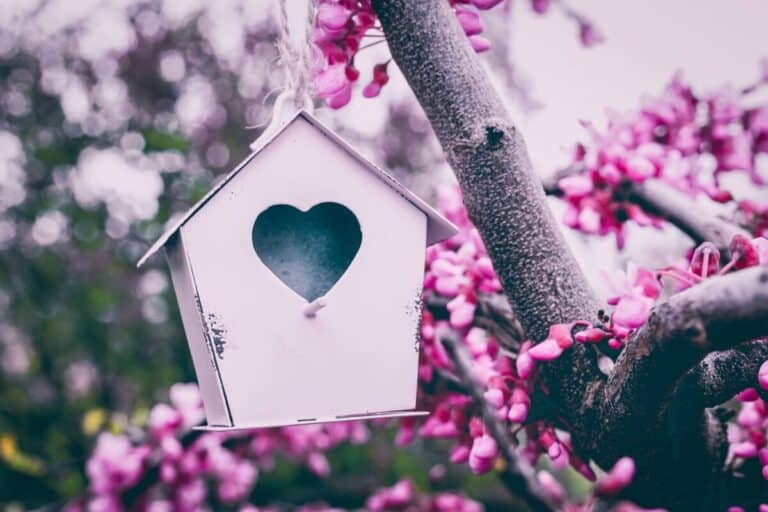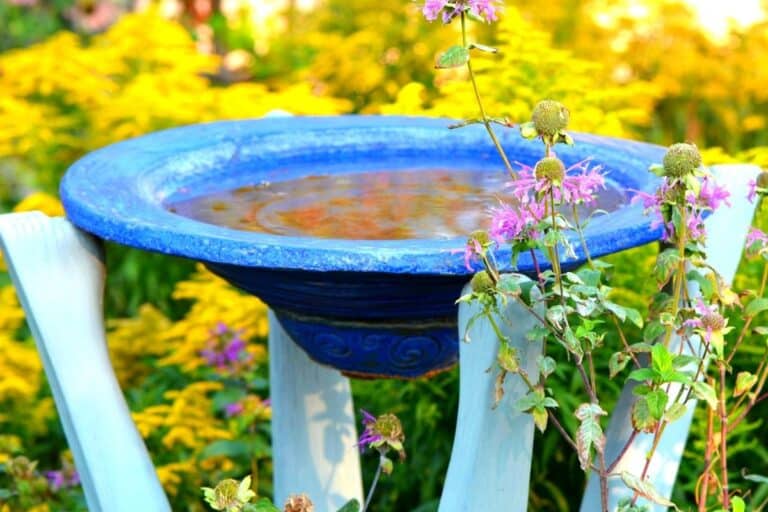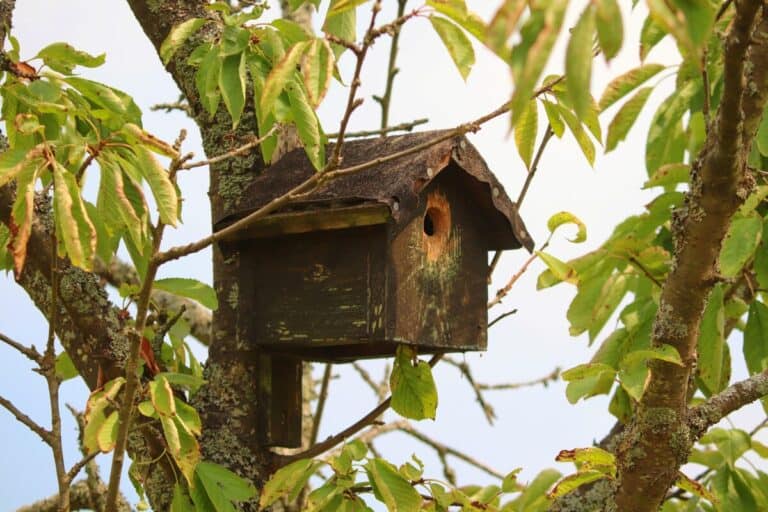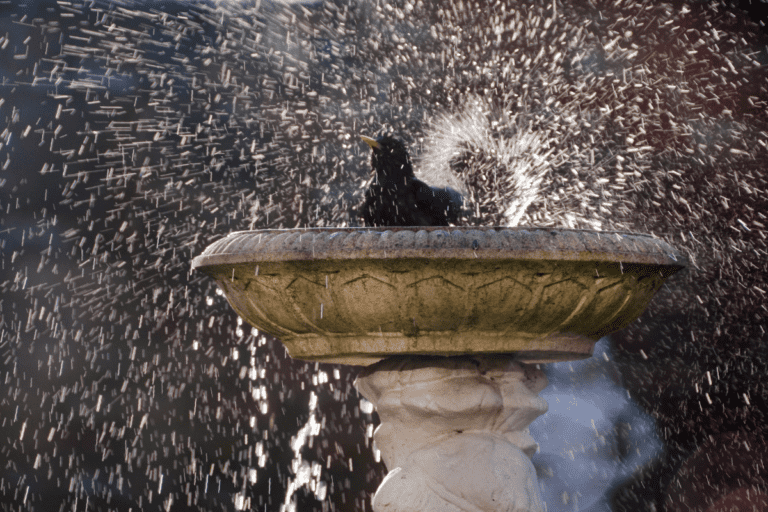Do You Need To Put Anything In A Bird Box? (ANSWERED!)
We’re reader-supported; we may earn a commission from links in this article.
If you’re reading this, you’re probably wondering if your bird box is sufficient without any extra additions to it. I thought the same too. And so I went and did a little research based on some expert’s opinions and came up with this answer:
You do not need to put anything in a bird box. Any nesting material that is put in a bird box will not be used by birds; they may even remove it. However, you may choose to put other items in the bird box such as a foundation and a bird box camera to ensure the birds grow up well in the bird box.
Despite that, there are some extra items that you can include to enhance your birding experience from your bird box. Read on more to find out why birds reject nesting material PLUS some ideas on what other items you can include in your bird box!
Why Nesting Material Is Not Recommended To Be Placed In A Bird Box
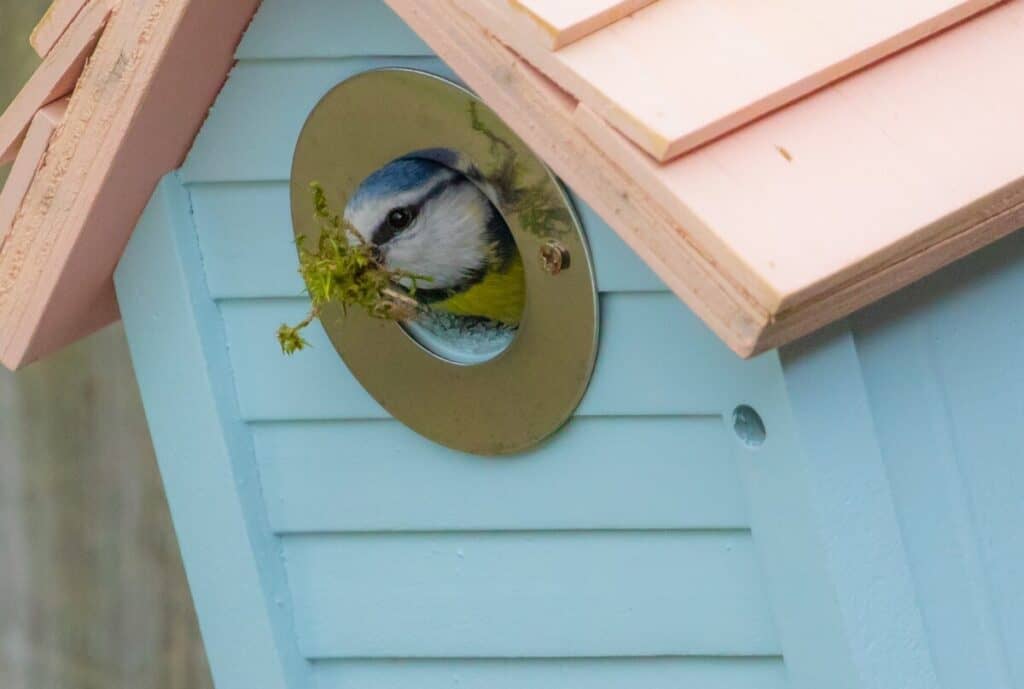
Firstly, you have to understand that our feathered friends, birds, are extremely fussy animals that are highly particular about their nests. As an analogy, take it that if someone were to do the interior design of your house for you and it’s totally not to your liking. The same goes for birds!
Birds of different species have different tolerance levels to the decoration and layout of their homes. They are also picky in how they want their materials to be interwoven into a nest.
Examples of nesting materials that birds use are grasses, twigs, fallen feathers, metal wires, mosses, and mud. As different birds have a different preference for these birds, they may even take to remove some of the nesting material you place in your bird box, which will totally make your efforts go in vain.
If you’re not careful in the items that you place in the bird box, you may even inadvertently include some poisonous materials. As such, it is wise to stay away from doing all the nesting for the birds and let them build their own homes.
Additional Bird Box Item Ideas
With all that convincing that bird boxes shouldn’t be filled with anything, and especially nesting material, you will probably be thinking: “won’t it be too empty and uncomfortable?”
Well, the truth of the matter is that you will need to be educated on what kind of additional materials can be added to the bird box to enhance it, as different birds have different material preferences. With that being said here are some additional items you may want to consider including in a bird box:
1) Foundation
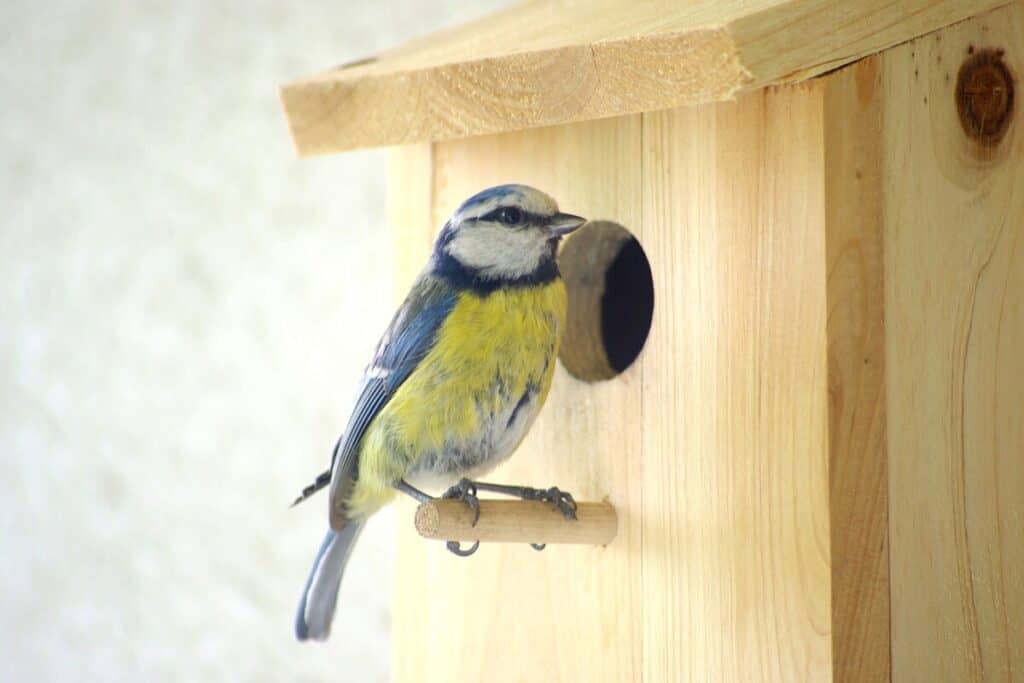
Instead of building the entire nest for the bird into the bird box, you can simply set up a foundation. As you do not want to include anything poisonous that may harm the bird, I will only run through the items that are of natural origin that mimic the natural nests of birds out there.
There will be no synthetic items covered as I personally do not recommend them because you do not know what harm it may cause to the birds.
Generally, the natural items to include are small dry twigs, bark, woodchippings, and leaves. One very important thing to note when you choose these items to lay the foundation of your bird box is this: do make sure that the items you choose are dry and not moist.
You may never know if the twigs or branches you picked up are teeming with bacteria/fungi/mites that may bring diseases to the birds.
With that being said, let’s now run through the different foundations that will have to tailor to some common bird box resident birds. Here’s a table to summarise it easily for you:
| Bird | Recommended Foundation |
| Robins | 1-inch thick of dry and dead leaves |
| Tits | 1-inch thick of soft and dry leaves |
| Sparrow | 1-inch thick of dried grass and straw |
| Owl | 2 – 3 inches of pine, beech, or oak sawdust and woodchippings |
| Woodpecker | 2 – 3 inches of pine, beech, or oak sawdust and woodchippings |
From the table above, we can see that different birds have different preferences due to their size and pickiness. As such we need to be prudent in how much foundation we add to our bird boxes. If in doubt on what and how much to add, don’t add any foundation. It is not necessary but can be beneficial to attracting the birds.
2) Bird Box Camera For Monitoring
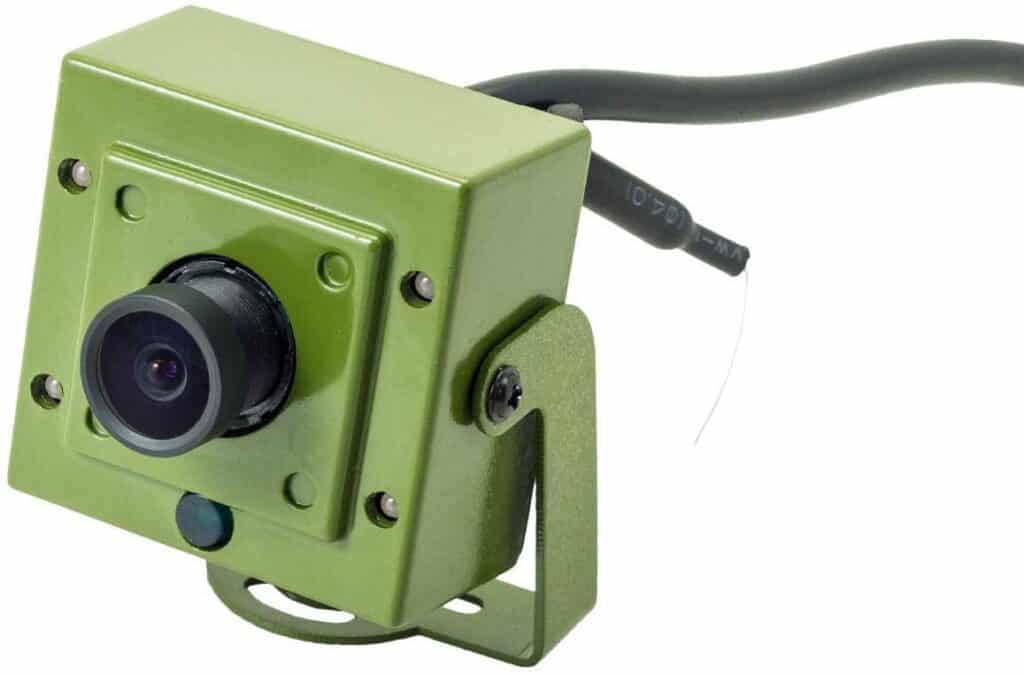
If you’d really like to place something inside the bird box, then consider installing a bird box camera to monitor your bird box occupancy. I would recommend this to those who are curious to see and monitor the progress of the bird family that takes its residence in your bird box.
A bird box camera can be installed on the bottom side of the roof of the bird box and connected to a power supply.
In some of the bird box cameras, they have features that allow you to see the live feed from your phone! This means that you can go birding from home! How cool is that?
If that’s something up your alley, here’s an article on what are the possible options of bird box cameras that you can buy and install in your bird box.
Final Thoughts
Now that you know that including anything in a bird box is not necessary, as this is how their organic and natural environment it like, and we are striving to mimic that similar experience for the birds.
If you’d like to enhance their experience and possibly attract more birds, place a foundation or a bird box camera and nothing nothing more. That’s all folks, and I hope you enjoyed reading this article and have learnt something about what to include in your bird box. Thanks for reading and happy birding!
My Recommended Birding Resources:
Hey there, Justin here!
Here’s a list of all my favorite resources, products, and brands I trust and love.
My Celestron Nature DX 8×42 Binoculars: It’s a great budget pair for beginner birders. Highly valued for its price! Read my review.
Safe Paint for Bird Baths Guide: Learn about non-toxic paint for painting bird baths.
Safe Sealers for Bird Baths Guide: Learn which sealers are safe for bird baths.
Safe Paint for Bird Feeders Guide: Learn what special care needs to be taken to paint bird feeders with the right paint.
Safe Paint for Birdhouses Guide: Learn about non-toxic paint for painting birdhouses. (Not the same as bird baths!)
Bird Identification Apps Guide: 2 of my favorite birding apps are Merlin Bird ID, and eBird Mobile! Merlin is great for tracking and identifying birds, and eBird Mobile is great for tracking the birds sighted when birding.
Check out my resources page for the full list of resources I recommend!

Justin Chia
Justin is the founder and author of Birding Outdoors. He is a Nanyang Technological University (NTU) alumnus with a Bachelor of Biological Sciences and a former data analyst.
Now, Justin runs the Birding Outdoors blog full-time, hoping to share his deep love for birds, birding, and nature with others.
To unwind, Justin enjoys gaming and reading.

